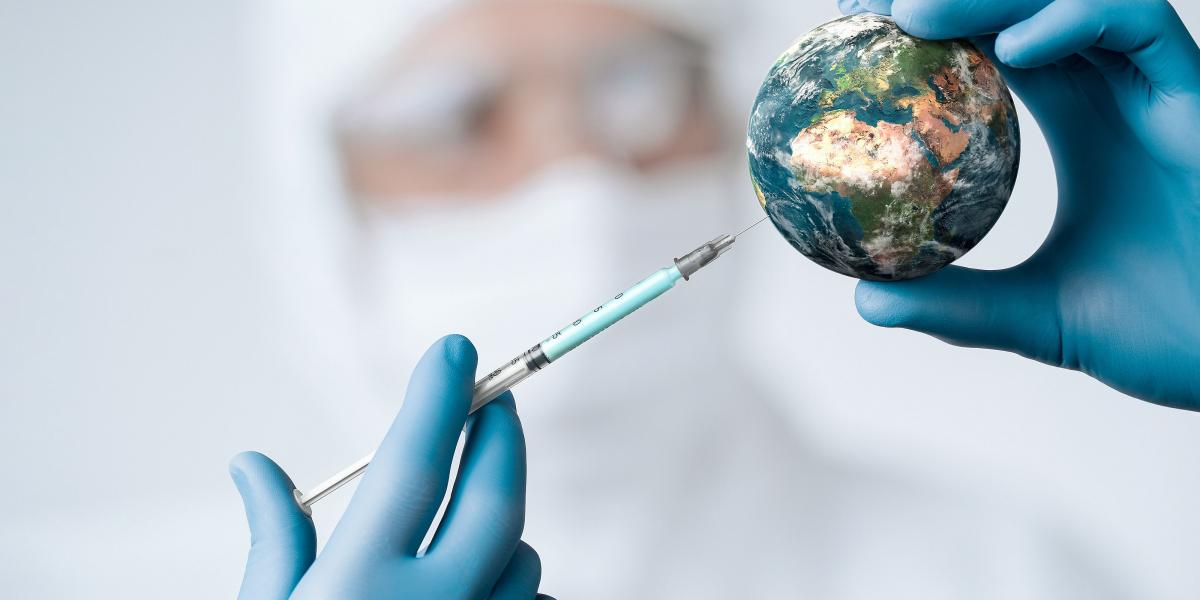Protection for All: Equitable Distribution of COVID-19 Vaccines
Getting COVID-19 vaccines to those who need them most will require unprecedented global cooperation.
At some point in the coming months or years, one or more vaccines will be proven to safely protect against the novel coronavirus. The next step may be even more difficult: ensuring that at least 70% of the world’s 7.8 billion people receive the vaccine (or develop immunity through infection) in order to establish immunity levels needed to keep the virus in check.
How the vaccine is distributed is an important question for policymakers, public health experts, and ethicists to explore, says William Moss, MD, MPH, executive director of the International Vaccine Access Center. “We’ll certainly have a period—it may be measured in months or years—where we won’t have enough vaccine for everyone who needs it,” says Moss, an Epidemiology professor.
Will the vaccine belong to all nations and be administered first to those who most need it? Or will countries that produce vaccines keep them for their own citizens? It depends whether the approved vaccines are created by international partnerships or by countries that are working on their own, says Ruth Faden, PhD, MPH, a professor in Health Policy and Management and founder of the Johns Hopkins Berman Institute of Bioethics.
Faden points to the words of UN Secretary-General Antonio Guterres, who said in May that a vaccine “must be treated as global public goods available and affordable for all.” Guterres was addressing a global conference, convened by the European Union, which raised $8 billion for the development of a vaccine. Forty countries agreed to work together at the conference, though the U.S. did not send a representative.
Will the vaccine belong to all nations and be administered first to those who most need it? Or will countries that produce vaccines keep them for their own citizens?
If the vaccine is indeed treated as a global public good, Faden says, it will be administered first to the people most at risk in the countries where the virus poses the greatest danger. However, Moss adds, there is a no international governing body poised to oversee this. The WHO can make recommendations, but has no enforcement power.
Without a global mechanism for the equitable allocation of COVID-19 vaccines worldwide, rich countries will outbid poor countries and monopolize the supply, says Gavin Yamey, MD, MPH, MA, director of Duke University’s Center for Policy Impact in Global Health. “If you think the ventilator wars in this country, where states were pitted against each other to get necessary equipment, were bad, that was just a taste of things to come at the global level,” he says.
Once countries obtain vaccines, they will need to prioritize the types of people who get the vaccine, says Moss. “You would imagine that people will want to target those who are most at-risk and most vulnerable: health care workers, first responders, the elderly, and those with compromised immune systems,” he says.
One key to vaccinating people as quickly as possible is to start manufacturing several vaccines before their efficacy and safety have been tested. This practice, called “manufacturing at risk,” is costly, Yamey says. Countries, nonprofits, or drug companies will have to invest in the equipment, raw materials, and labor to produce a vaccine with the understanding that the finished product would be discarded if it is faulty. It is likely, Moss says, that several vaccines will prove safe and effective and that different vaccines will be administered in different parts of the world.
The global collaborations already underway offer some hope that world leaders could find a way to get the vaccine first to those who need it most, says Faden. “If we can pull off anything approximating that, it will be a first,” she says. “It will be stunning. It will absolutely be the right thing to do ethically.”
